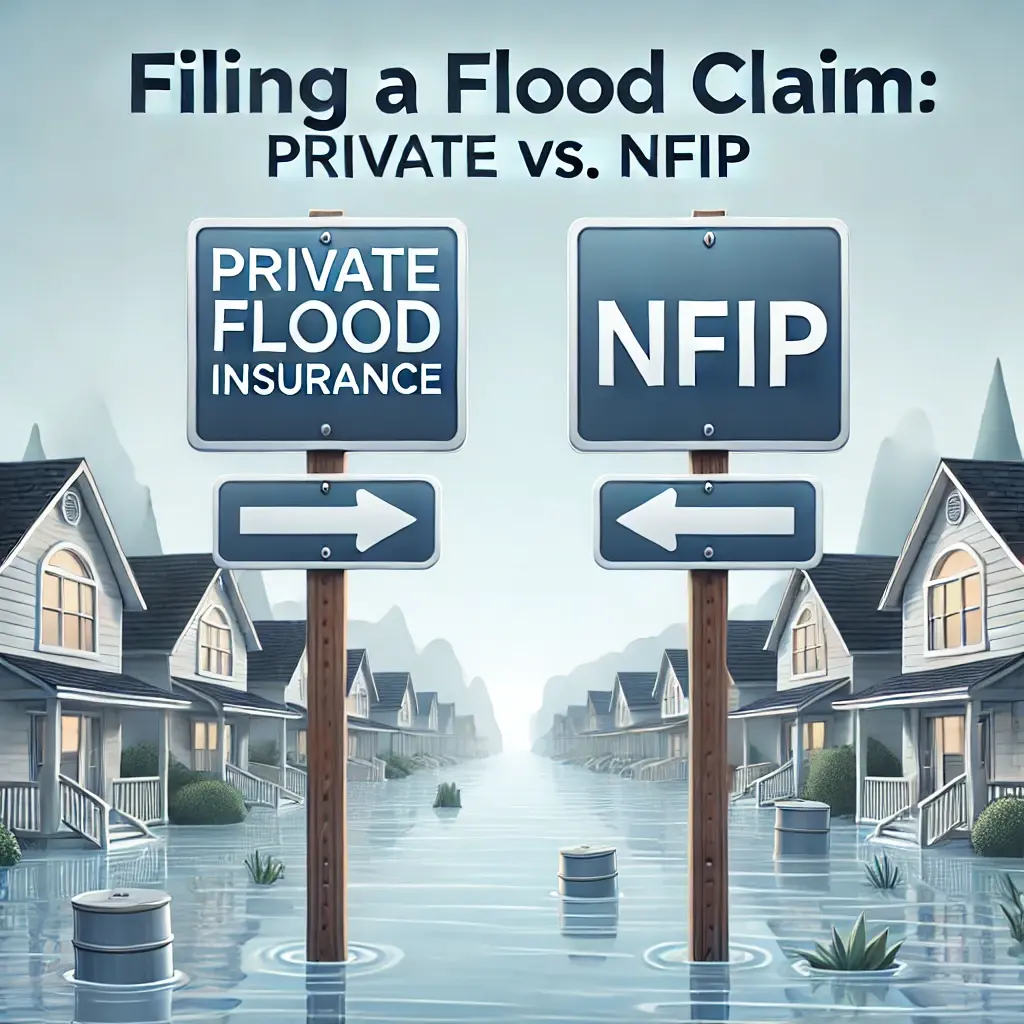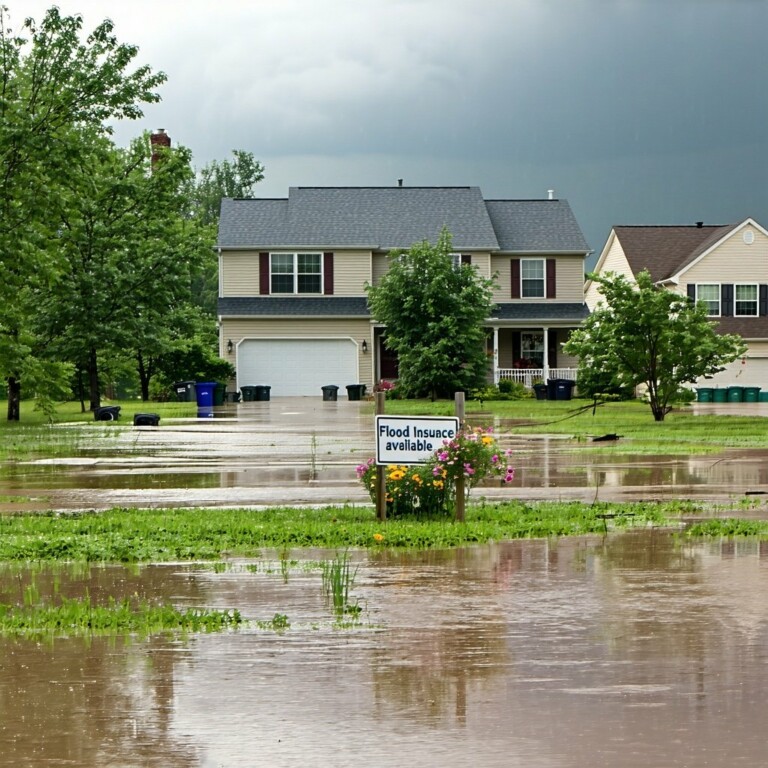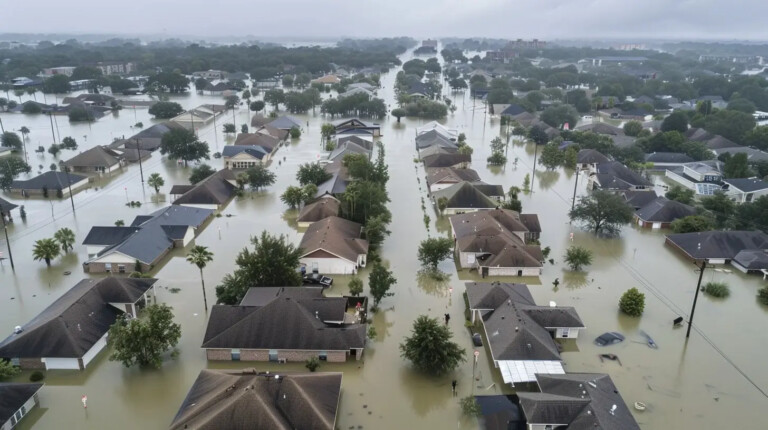Private Flood Insurance vs NFIP: What Actually Happens When You File a Claim
If you’re in a high-risk flood zone like AE, the last thing you want is confusion when a disaster strikes.
After all, you’re paying monthly for peace of mind—but do you actually know what to expect when you file a claim? Whether you have a private flood insurance policy or coverage through the NFIP (National Flood Insurance Program), the claim experience can be dramatically different.
With over 2000 real-life claims under our belt, we’re pulling back the curtain on how each system really works, what pitfalls to avoid, and when private flood insurance might not be the right move.
Let’s break it all down and help you choose the flood insurance option that actually protects your home—and your sanity—when the water rises.
What Is Private Flood Insurance, and How Does It Differ from the NFIP?
Private flood insurance is flood coverage offered by private insurers, while the NFIP is a federally backed program.
While both aim to protect you in the event of flooding, they differ in key areas:
| Feature | NFIP | Private Flood Insurance |
|---|---|---|
| Coverage Limit | $250,000 for home, $100,000 for contents | Often exceeds $500,000 |
| Availability | Nationwide | Varies by provider and location |
| Waiting Period | 30 days | As little as 10–15 days |
| Underwriting Criteria | Less flexible | Can use advanced risk modeling |
| Accepted by Mortgage Lenders | Yes | Yes (but check with your lender) |
Bottom Line: If you live in a flood zone AE, both are options—but one may be better suited to your risk level and budget.
What Happens When You File a Flood Insurance Claim?
This is where the differences start to matter. A lot.
Filing with the NFIP:
-
You’ll typically deal with a third-party adjuster, not FEMA.
-
The NFIP has strict timelines and documentation rules.
-
Payouts are based on pre-set replacement values, not necessarily your actual loss.
Filing with Private Insurance:
-
Claims processes vary widely by provider.
-
Some policies cover additional living expenses (ALE)—the NFIP does not.
-
You may have access to faster inspections, online portals, and direct adjuster communication.
But beware: Private insurance isn’t always smoother. Some policies are written with exclusions or settlement practices that catch homeowners off guard.
Cost & Coverage Differences
On paper, private flood insurance often looks better—and sometimes it is.
-
Private premiums can be lower than NFIP if your property has favorable risk factors.
-
Coverage limits are usually higher and more flexible.
-
You may also get additional perks like loss of use coverage, pool repair, or detached structure protection.
However…
-
If you live in a repeatedly flooded area, some private insurers might deny coverage altogether.
-
Renewal terms can change drastically after one claim.
Hidden Risks with Private Flood Insurance Claims
Private flood claims can surprise homeowners if they don’t read the fine print.
-
Claims denial after major flooding events isn’t unheard of. Some providers have exit clauses.
-
Adjuster quality varies. While some are great, others lack NFIP’s training and regulation.
-
ALE isn’t always guaranteed. Check for exclusions before assuming this is covered.
Pro Tip: Always ask your private insurer, “How many claims have you paid out in my zip code in the last 5 years?”
Real-Life Claim Scenarios: NFIP vs Private
Scenario 1: Flooded Basement in Flood Zone AE (Alabama)
-
NFIP payout: $0 for finished basement contents. No ALE.
-
Private payout: $18,000 for basement plus 2 weeks of hotel coverage.
Scenario 2: Hurricane Damage in Florida
-
NFIP: $73,000 claim settled in 4 months after multiple appeals.
-
Private: $65,000 claim denied due to an exclusion clause in the policy wording.
Takeaway: Each system has its pros and cons. What works for your neighbor may not work for you.
When Should You Choose Private Flood Insurance (and When You Shouldn’t)?
Choose private flood insurance if:
-
You want higher coverage limits.
-
You need ALE.
-
Your home’s elevation or mitigation measures lower your private premium.
Stick with NFIP if:
-
You’ve filed claims before and worry about renewal denials.
-
Your property has been flooded multiple times.
-
You want predictable, regulated claims processing.
Top Private Flood Insurance Providers by Scenario
| Scenario | Top Private Provider Suggestion |
|---|---|
| High-value home near the coast | Neptune Flood |
| Rural property with few claims | TypTap |
| Home with finished basement | Zurich |
| Landlord or investment property | Hiscox or Lloyd’s of London syndicates |
Note: Providers and coverage vary by state and property risk rating.
Conclusion: What You Need to Know Before Choosing Your Flood Policy
At the end of the day, it’s not about NFIP vs private—it’s about what actually happens when you file a claim.
If you’re in flood zone AE, the stakes are high. A single mistake—like assuming you’re covered for ALE or basement contents—can cost you tens of thousands of dollars.
Now that you’ve seen how each system performs, your next step is to review your existing policy or get a comparison quote from an expert who handles both NFIP and private flood claims regularly.
Still unsure which option is best for your scenario? Start here:

Navigating the Waters of Flood Insurance in COBRA Zones
When it comes to protecting your home from the unpredictable forces of nature, understanding your flood insurance options is crucial. Many homeowners find themselves navigating the complex landscape of flood insurance, especially when their property lies within a COBRA zone. You’ve asked, and we’re here to answer all your pressing questions about flood insurance in these unique areas.
What Exactly is a COBRA Zone?
What makes COBRA zones different from other flood zones, and why does it matter for my flood insurance?
COBRA zones, or Coastal Barrier Resources System areas, are designated by the federal government to protect natural coastal barriers. Development in these zones is discouraged to conserve natural habitats, minimize loss of human life, and reduce federal expenditure on infrastructure and disaster relief. For homeowners, this means that obtaining federal flood insurance through the National Flood Insurance Program (NFIP) is not an option, making it essential to explore alternative insurance solutions.
Can I Get Flood Insurance in a COBRA Zone?
They Ask: If federal flood insurance isn’t available in COBRA zones, what are my options for protecting my property?
You Answer: While properties in COBRA zones are ineligible for federal flood insurance, private flood insurance becomes a vital alternative. Private insurers offer policies designed to meet the unique needs of homeowners in these areas, ensuring you can secure the protection you need against flooding. It’s crucial to work with an insurance agent who understands the intricacies of flood insurance policies in COBRA zones to find the best coverage for your home.
How Do I Know If My Property is in a COBRA Zone?
They Ask: How can I determine if my property is located within a COBRA zone and understand the implications for my flood insurance coverage?
You Answer: Identifying whether your property is in a COBRA zone is the first step in navigating your flood insurance options. You can use tools like the CBRS Mapper provided by the Fish and Wildlife Service or consult with a knowledgeable insurance agent. Understanding your property’s location helps clarify your insurance options and ensures you’re pursuing the right coverage for your situation.
What Should I Look for in a Flood Insurance Policy?
They Ask: What key factors should I consider when choosing a flood insurance policy for my property in a COBRA zone?
You Answer: When selecting a flood insurance policy in a COBRA zone, consider coverage limits, deductibles, and exclusions. It’s also important to assess the insurer’s reputation and the policy’s provisions for claims handling. An insurance agent specializing in flood insurance can help you compare policies and choose one that offers comprehensive protection tailored to your needs.
Conclusion
Understanding flood insurance in COBRA zones doesn’t have to be a daunting task. By asking the right questions and seeking expert advice, you can navigate the complexities of securing the right flood insurance for your property. Remember, protecting your home from flooding is about ensuring your peace of mind and financial security, regardless of where you live.
Navigating the Waters of Flood Insurance in COBRA Zones
When it comes to protecting your home from the unpredictable forces of nature, understanding your flood insurance options is crucial. Many homeowners find themselves navigating the complex landscape of flood insurance, especially when their property lies within a COBRA zone. You’ve asked, and we’re here to answer all your pressing questions about flood insurance in these unique areas.
What Exactly is a COBRA Zone?
What makes COBRA zones different from other flood zones, and why does it matter for my flood insurance?
COBRA zones, or Coastal Barrier Resources System areas, are designated by the federal government to protect natural coastal barriers. Development in these zones is discouraged to conserve natural habitats, minimize loss of human life, and reduce federal expenditure on infrastructure and disaster relief. For homeowners, this means that obtaining federal flood insurance through the National Flood Insurance Program (NFIP) is not an option, making it essential to explore alternative insurance solutions.
Can I Get Flood Insurance in a COBRA Zone?
They Ask: If federal flood insurance isn’t available in COBRA zones, what are my options for protecting my property?
You Answer: While properties in COBRA zones are ineligible for federal flood insurance, private flood insurance becomes a vital alternative. Private insurers offer policies designed to meet the unique needs of homeowners in these areas, ensuring you can secure the protection you need against flooding. It’s crucial to work with an insurance agent who understands the intricacies of flood insurance policies in COBRA zones to find the best coverage for your home.
How Do I Know If My Property is in a COBRA Zone?
They Ask: How can I determine if my property is located within a COBRA zone and understand the implications for my flood insurance coverage?
You Answer: Identifying whether your property is in a COBRA zone is the first step in navigating your flood insurance options. You can use tools like the CBRS Mapper provided by the Fish and Wildlife Service or consult with a knowledgeable insurance agent. Understanding your property’s location helps clarify your insurance options and ensures you’re pursuing the right coverage for your situation.
What Should I Look for in a Flood Insurance Policy?
They Ask: What key factors should I consider when choosing a flood insurance policy for my property in a COBRA zone?
You Answer: When selecting a flood insurance policy in a COBRA zone, consider coverage limits, deductibles, and exclusions. It’s also important to assess the insurer’s reputation and the policy’s provisions for claims handling. An insurance agent specializing in flood insurance can help you compare policies and choose one that offers comprehensive protection tailored to your needs.
Conclusion
Understanding flood insurance in COBRA zones doesn’t have to be a daunting task. By asking the right questions and seeking expert advice, you can navigate the complexities of securing the right flood insurance for your property. Remember, protecting your home from flooding is about ensuring your peace of mind and financial security, regardless of where you live.
Navigating the Waters of Flood Insurance in COBRA Zones
When it comes to protecting your home from the unpredictable forces of nature, understanding your flood insurance options is crucial. Many homeowners find themselves navigating the complex landscape of flood insurance, especially when their property lies within a COBRA zone. You’ve asked, and we’re here to answer all your pressing questions about flood insurance in these unique areas.
What Exactly is a COBRA Zone?
What makes COBRA zones different from other flood zones, and why does it matter for my flood insurance?
COBRA zones, or Coastal Barrier Resources System areas, are designated by the federal government to protect natural coastal barriers. Development in these zones is discouraged to conserve natural habitats, minimize loss of human life, and reduce federal expenditure on infrastructure and disaster relief. For homeowners, this means that obtaining federal flood insurance through the National Flood Insurance Program (NFIP) is not an option, making it essential to explore alternative insurance solutions.
Can I Get Flood Insurance in a COBRA Zone?
They Ask: If federal flood insurance isn’t available in COBRA zones, what are my options for protecting my property?
You Answer: While properties in COBRA zones are ineligible for federal flood insurance, private flood insurance becomes a vital alternative. Private insurers offer policies designed to meet the unique needs of homeowners in these areas, ensuring you can secure the protection you need against flooding. It’s crucial to work with an insurance agent who understands the intricacies of flood insurance policies in COBRA zones to find the best coverage for your home.
How Do I Know If My Property is in a COBRA Zone?
They Ask: How can I determine if my property is located within a COBRA zone and understand the implications for my flood insurance coverage?
You Answer: Identifying whether your property is in a COBRA zone is the first step in navigating your flood insurance options. You can use tools like the CBRS Mapper provided by the Fish and Wildlife Service or consult with a knowledgeable insurance agent. Understanding your property’s location helps clarify your insurance options and ensures you’re pursuing the right coverage for your situation.
What Should I Look for in a Flood Insurance Policy?
They Ask: What key factors should I consider when choosing a flood insurance policy for my property in a COBRA zone?
You Answer: When selecting a flood insurance policy in a COBRA zone, consider coverage limits, deductibles, and exclusions. It’s also important to assess the insurer’s reputation and the policy’s provisions for claims handling. An insurance agent specializing in flood insurance can help you compare policies and choose one that offers comprehensive protection tailored to your needs.
Conclusion
Understanding flood insurance in COBRA zones doesn’t have to be a daunting task. By asking the right questions and seeking expert advice, you can navigate the complexities of securing the right flood insurance for your property. Remember, protecting your home from flooding is about ensuring your peace of mind and financial security, regardless of where you live.
Navigating the Waters of Flood Insurance in COBRA Zones
When it comes to protecting your home from the unpredictable forces of nature, understanding your flood insurance options is crucial. Many homeowners find themselves navigating the complex landscape of flood insurance, especially when their property lies within a COBRA zone. You’ve asked, and we’re here to answer all your pressing questions about flood insurance in these unique areas.
What Exactly is a COBRA Zone?
What makes COBRA zones different from other flood zones, and why does it matter for my flood insurance?
COBRA zones, or Coastal Barrier Resources System areas, are designated by the federal government to protect natural coastal barriers. Development in these zones is discouraged to conserve natural habitats, minimize loss of human life, and reduce federal expenditure on infrastructure and disaster relief. For homeowners, this means that obtaining federal flood insurance through the National Flood Insurance Program (NFIP) is not an option, making it essential to explore alternative insurance solutions.
Can I Get Flood Insurance in a COBRA Zone?
They Ask: If federal flood insurance isn’t available in COBRA zones, what are my options for protecting my property?
You Answer: While properties in COBRA zones are ineligible for federal flood insurance, private flood insurance becomes a vital alternative. Private insurers offer policies designed to meet the unique needs of homeowners in these areas, ensuring you can secure the protection you need against flooding. It’s crucial to work with an insurance agent who understands the intricacies of flood insurance policies in COBRA zones to find the best coverage for your home.
How Do I Know If My Property is in a COBRA Zone?
They Ask: How can I determine if my property is located within a COBRA zone and understand the implications for my flood insurance coverage?
You Answer: Identifying whether your property is in a COBRA zone is the first step in navigating your flood insurance options. You can use tools like the CBRS Mapper provided by the Fish and Wildlife Service or consult with a knowledgeable insurance agent. Understanding your property’s location helps clarify your insurance options and ensures you’re pursuing the right coverage for your situation.
What Should I Look for in a Flood Insurance Policy?
They Ask: What key factors should I consider when choosing a flood insurance policy for my property in a COBRA zone?
You Answer: When selecting a flood insurance policy in a COBRA zone, consider coverage limits, deductibles, and exclusions. It’s also important to assess the insurer’s reputation and the policy’s provisions for claims handling. An insurance agent specializing in flood insurance can help you compare policies and choose one that offers comprehensive protection tailored to your needs.
Conclusion
Understanding flood insurance in COBRA zones doesn’t have to be a daunting task. By asking the right questions and seeking expert advice, you can navigate the complexities of securing the right flood insurance for your property. Remember, protecting your home from flooding is about ensuring your peace of mind and financial security, regardless of where you live.
Information contained on this page is provided by an independent third-party content provider. This website make no warranties or representations in connection therewith. If you are affiliated with this page and would like it removed please contact editor @producerpress.com







